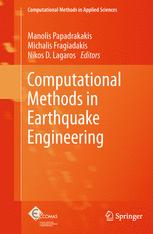

Most ebook files are in PDF format, so you can easily read them using various software such as Foxit Reader or directly on the Google Chrome browser.
Some ebook files are released by publishers in other formats such as .awz, .mobi, .epub, .fb2, etc. You may need to install specific software to read these formats on mobile/PC, such as Calibre.
Please read the tutorial at this link: https://ebookbell.com/faq
We offer FREE conversion to the popular formats you request; however, this may take some time. Therefore, right after payment, please email us, and we will try to provide the service as quickly as possible.
For some exceptional file formats or broken links (if any), please refrain from opening any disputes. Instead, email us first, and we will try to assist within a maximum of 6 hours.
EbookBell Team

4.8
74 reviewsThis book provides an insight in advanced methods and concepts for structural analysis and design against seismic loading. The book consists of 25 chapters dealing with a wide range of timely issues in contemporary Earthquake Engineering. In brief, the topics covered are: collapse assessment, record selection, effect of soil conditions, problems in seismic design, protection of monuments, earth dam structures and liquid containers, numerical methods, lifetime assessment, post-earthquake measures.
A common ground of understanding is provided between the communities of Earth Sciences and Computational Mechanics towards mitigating seismic risk. The topic is of great social and scientific interest, due to the large number of scientists and practicing engineers currently working in the field and due to the great social and economic consequences of earthquakes.